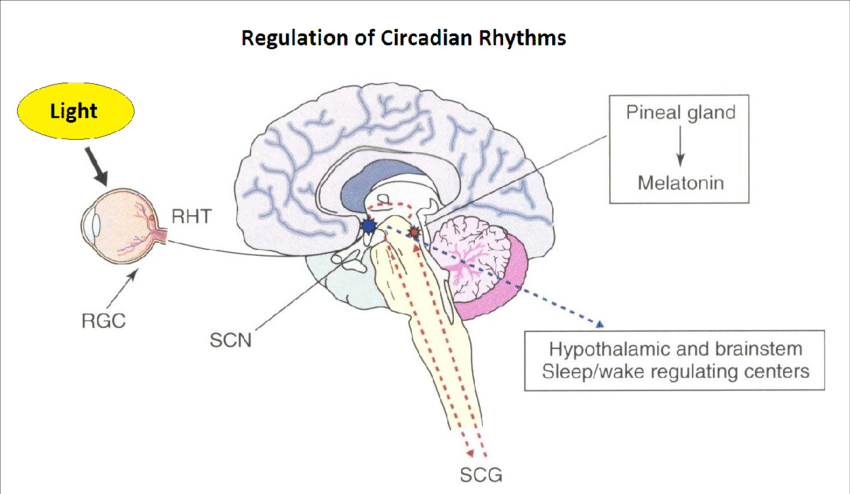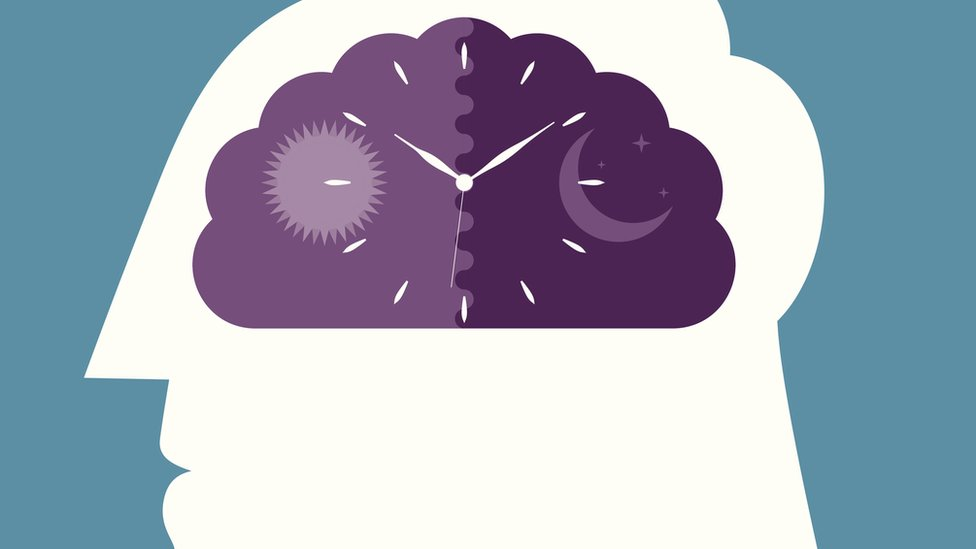With Daylight Savings Time just around the bend, many folks might be noticing a familiar visceral confusion come Sunday morning–it’s so bright outside, AND I don’t wanna get out of bed yet!
It’s no secret that seasonal changes in sunlight are associated with mood changes and sleep patterns. Specifically if sleep is in the conversation at all, then so must be the circadian rhythm. Sleep and the circadian rhythm, the 24-hour “clock” in the brain that regulates cycles of alertness and sleepiness, are inseparable partners in crime. Coming from the Latin terms “circa” and “diem,” which translate to “around” (circa) and “day” (diem), the term “circadian” reflects that Earth’s rotation around its axis is interconnected with the evolutionary biology of humans (Reddy, 2018). With the regular circadian rhythm, humans are able to use energy to the greatest efficiency and anticipate changes in the environment (Reddy, 2018).
The circadian rhythm, alternately the sleep/wake cycle, is controlled in the suprachiasmatic nuclei of the hypothalamus region of the brain and is synced up to light changes in the environment. Other environmental factors, such as the timing of meals, sleep, and social interactions during the day, greatly affect the circadian rhythm. Internally the secretion of melatonin, which contributes to sleepiness, is key in the processes of the suprachiasmatic nuclei to regulate the cycle. Irregularities in internal chemical production, such as a lack of melatonin or too much cortisol can disrupt the sleep/wake cycle (Arendt, 2000).

When the circadian rhythm gets disrupted at a chronic level, effects on the emotional and physical health of a person can be detrimental. These can include disruption in metabolism, impulsivity, slowed thinking, and decreased mental flexibility (ScienceDaily 2009). Likewise a body of research illustrates the association between circadian rhythm function and anxiety, bipolar disorder, depression, schizophrenia, eating disorders, and drug addiction. The evidence linking circadian rhythm function to cognitive function and psychiatric disorders also supports that circadian rhythms play a significant role in neuroplasticity (Pantazopoulos, Gamble, Stork, & Amir, 2018). Although the field of research on circadian rhythms and their relationship to biological, specifically neural, processes is extensive, there is still so much unknown, and the field continues to grow.
This Daylight Savings Time, stay mindful of how you can best care for your sleep-wake cycle during the change in light. The Sleep Foundation has published a list of good ”sleep hygiene” practices, including getting enough exposure to natural light and avoiding the use of artificial light around the time one is about to go to sleep so as to keep melatonin secretions in service of a regular sleep-wake cycle. Practices such as these can contribute to a well-functioning circadian rhythm, especially during times of environmental changes beyond your control.
Click here to create a TPN.Health profile and begin using the digital platform not only to connect to other behavioral health professionals but to share your resources and behavioral health content on the TPN.Health newsfeed!
References:
Arendt, J. (2000). Melatonin, Circadian Rhythms, and Sleep. The New England Journal of Medicine, 2000, 343:1114-1116. doi: 10.1056/NEJM200010123431510
Disruption Of Circadian Rhythms Affects Both Brain And Body, Mouse Study Finds. (2009, October 28). Retrieved from https://www.sciencedaily.com/releases/2009/10/091026225744.htm
Pantazopoulos, H., Gamble, K., Stork, O., & Amir, S. (2018). Circadian Rhythms in Regulation of Brain Processes and Role in Psychiatric Disorders. Neural Plasticity, 2018, 1–3. doi: 10.1155/2018/5892657
Reddy, S. (2018, October 27). Physiology, Circadian Rhythm. Retrieved from https://www.ncbi.nlm.nih.gov/books/NBK519507/
Diagram Credit:
https://www.researchgate.net/figure/The-Basic-Components-of-the-Circadian-System-Photic-information-to-the-suprachiasmatic_fig3_267910844
